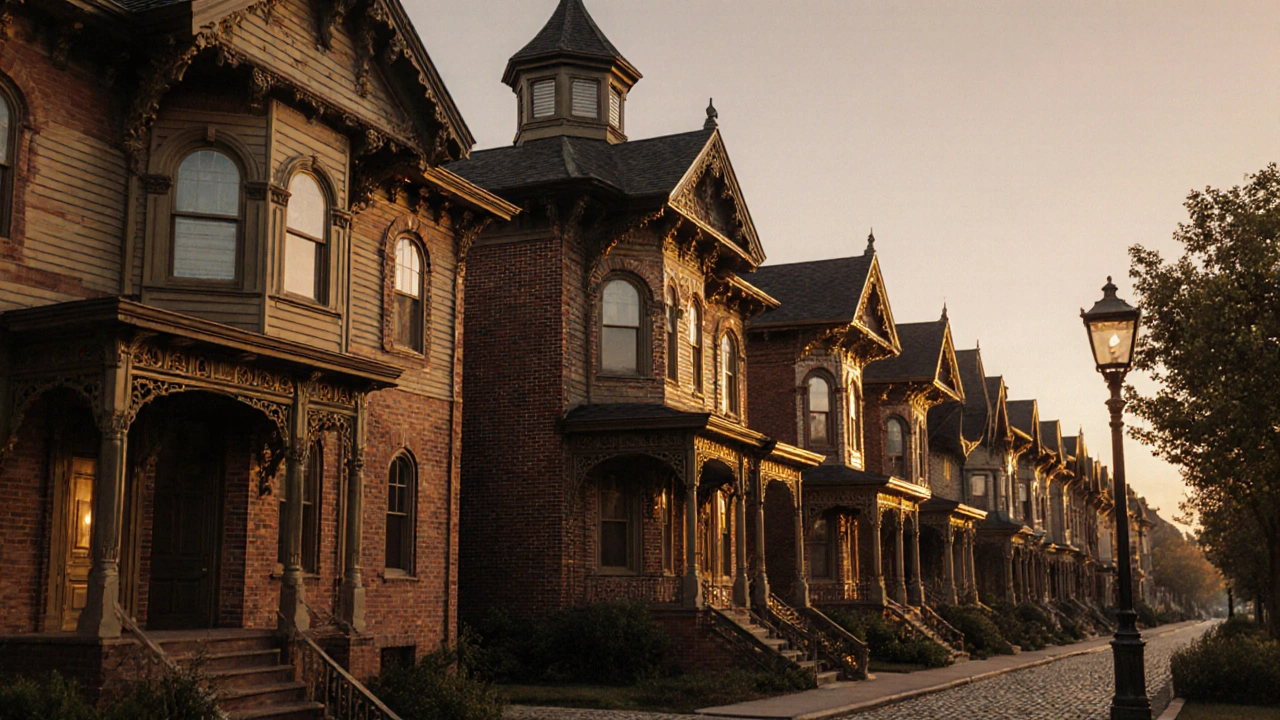Italianate architecture, with its tall windows, bracketed eaves, and low-pitched roofs, remains influential in modern design. Learn how its smart, timeless features continue to shape homes and buildings today.
Bracketed Eaves: What They Are, Why They Matter in Architectural Design
When you see a house with those ornate, carved supports under the roof overhang, you’re looking at bracketed eaves, decorative supports that extend from the wall to hold up the roof edge, often seen in 19th-century American and British homes. Also known as cornice brackets, they’re not just for looks—they help transfer weight, protect the walls from rain, and add character to a building’s silhouette. These details popped up everywhere during the Victorian era, especially in Italianate architecture, a style that borrowed from Tuscan villas and brought bold, ornamental details to suburban homes. You’ll spot them on row houses in Philadelphia, farmhouses in Iowa, and even modern renovations that want to feel historic without being a museum piece.
What makes bracketed eaves different from plain eaves? It’s the craftsmanship. While simple eaves are just the edge of the roof, bracketed ones have layers—wooden supports shaped like scrolls, leaves, or geometric patterns. They’re a hallmark of Victorian homes, a broad category of 19th-century design that loved detail, texture, and visual rhythm. You don’t need a fancy house to have them. Even modest cottages from the 1870s used simple brackets to add dignity to their roofs. And today? Architects still use them to tie new builds to the past without copying it exactly. They’re a shortcut to warmth and history.
These details don’t show up by accident. They’re tied to building techniques, materials, and cultural tastes of their time. In the U.S., mass-produced cast iron and wood brackets became affordable after the Civil War, letting middle-class families add flair to their homes. In Europe, similar styles appeared in architectural details, the small but meaningful elements that define a building’s personality beyond its basic form. Look at the posts below—you’ll see how bracketed eaves show up in Italianate houses, how they relate to cornice design, and why they’re still chosen for restorations. You’ll also find how they connect to broader trends like symmetry, ornamentation, and the revival of older styles. Whether you’re restoring an old house, designing something new, or just curious about what makes a building feel alive, these details tell a story. The posts ahead break it all down—no jargon, no fluff, just clear examples and practical insights.
Italianate architecture brought Tuscan villa charm to 19th-century homes with bracketed eaves, arched windows, and towers. Its influence still shapes modern design, from historic restorations to today’s farmhouse trends.


